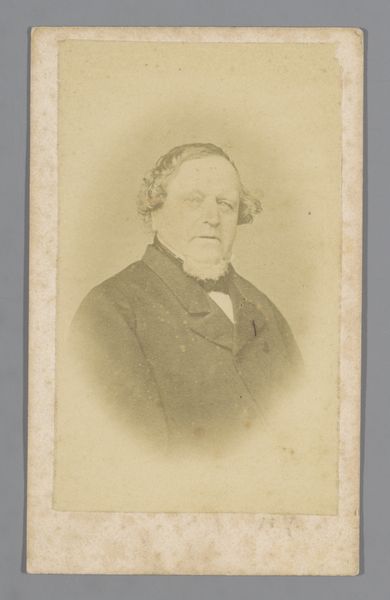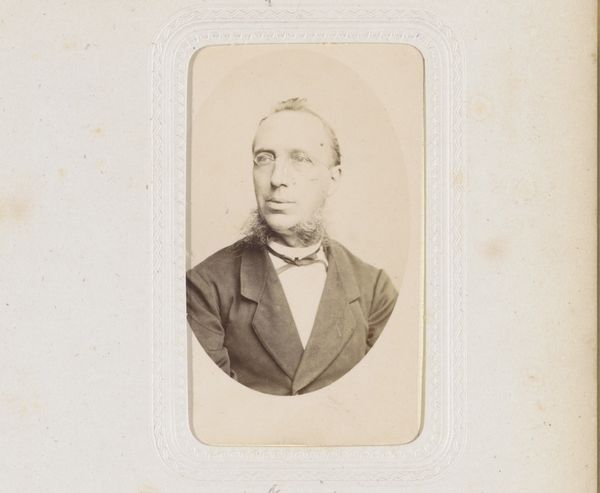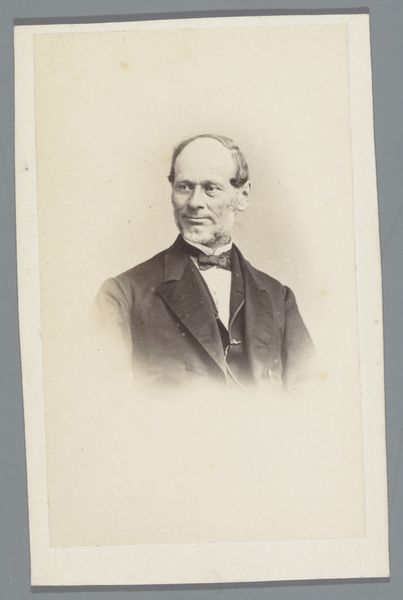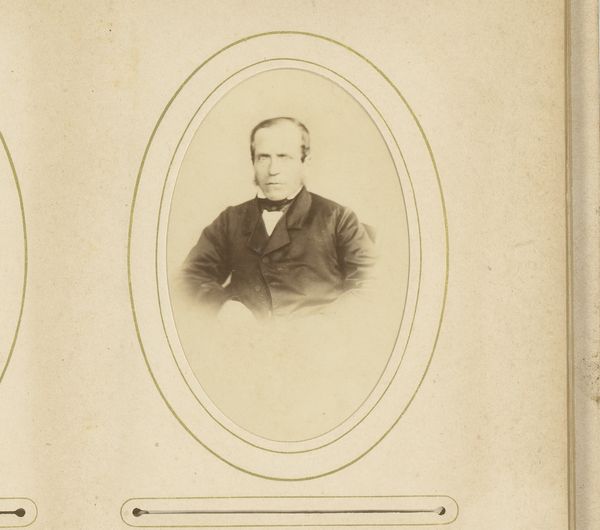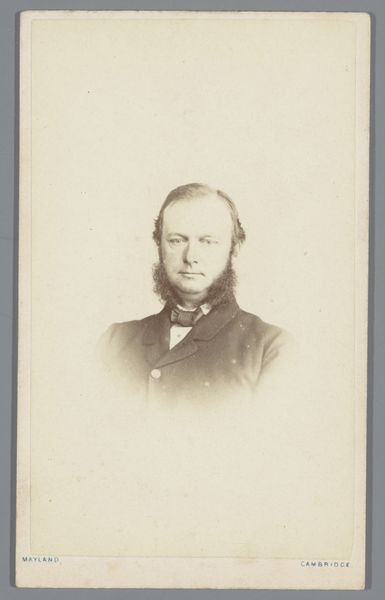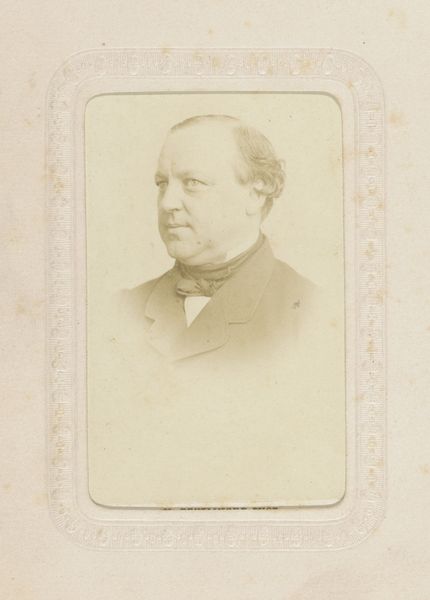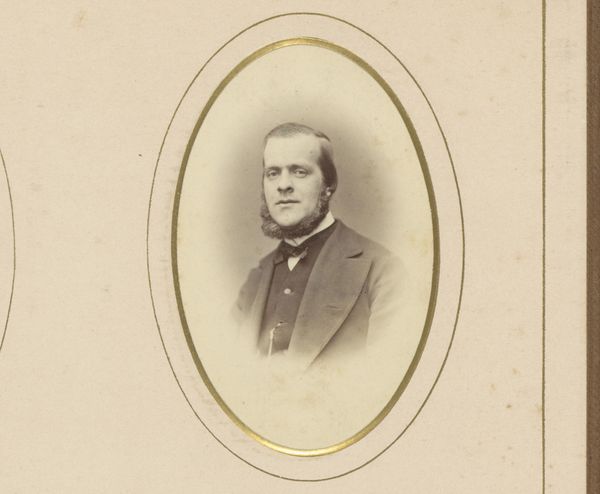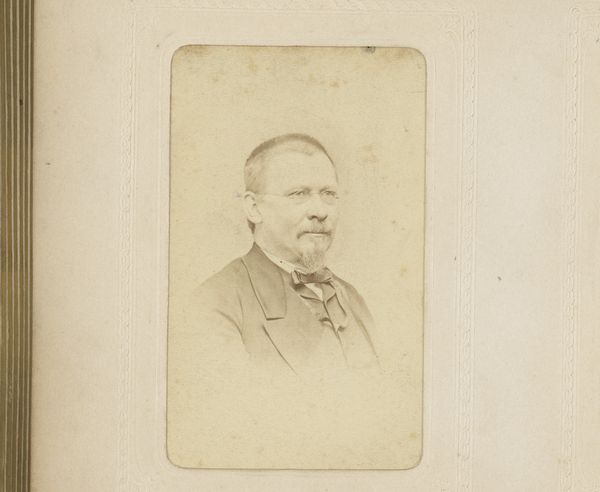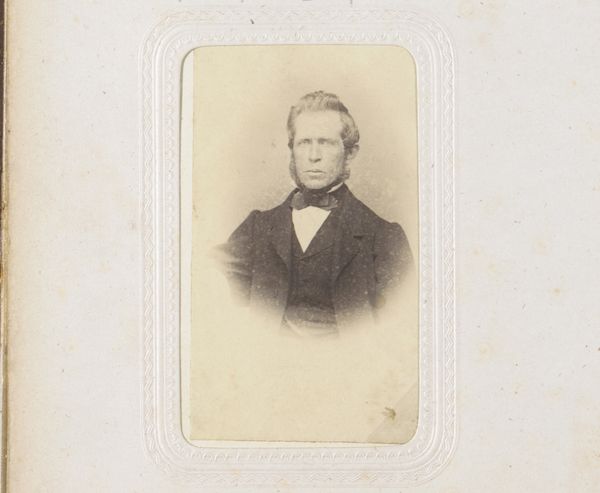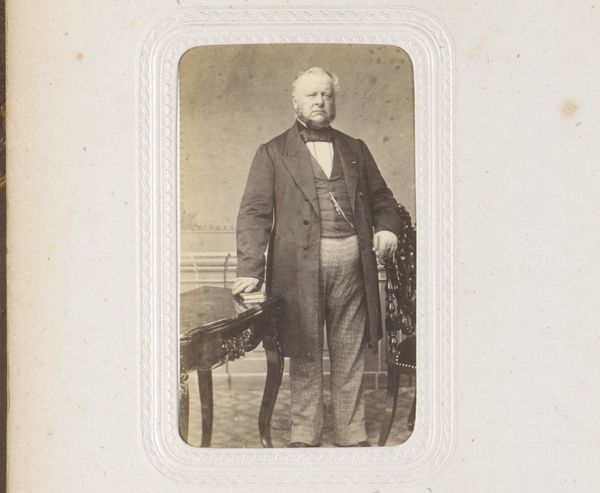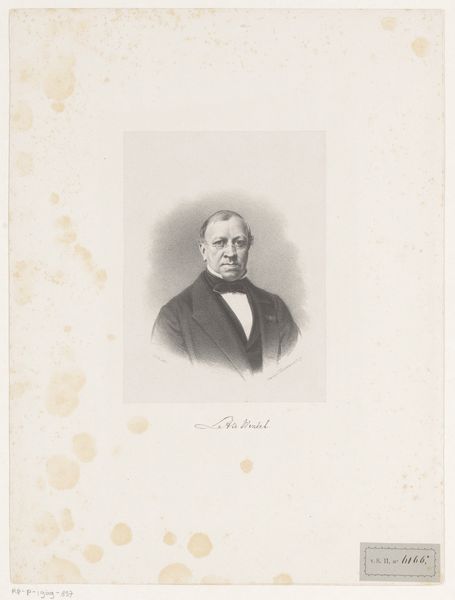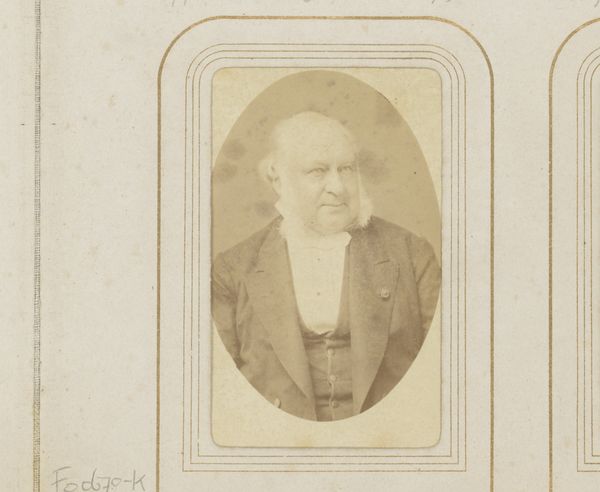
photography
#
portrait
#
16_19th-century
#
photography
#
realism
Dimensions: height 82 mm, width 50 mm
Copyright: Rijks Museum: Open Domain
Curator: Here we have a photograph from the Rijksmuseum collection, titled "Portret van een man," created sometime between 1861 and 1883 by Maurits Verveer. Editor: He certainly looks every bit the proper gentleman of his time! The sepia tone and vignette effect lend the image a soft, almost ethereal quality, even though his gaze is quite direct. I wonder about the process itself, the photographic chemistry, and paper involved. Curator: Daguerreotypes and calotypes were giving way to newer, cheaper methods in this era. The rise of photography studios reshaped how people recorded and projected their social standing. Portraiture became much more accessible to the burgeoning middle classes. Editor: Right, suddenly even ordinary citizens had a material way to visualize and, in a sense, materialize themselves. Think of the socio-economic shift that represented – not just artists portraying the wealthy but workers preserving their own likeness through an entirely new technology! It transforms labor itself by recording and presenting individual people and families in ways never thought of before, not through the same power structure as traditional painted portraiture. Curator: Absolutely. Verveer operated his own studio, playing a part in popularizing this very form. The slightly staged formality echoes the era's photographic conventions; it tells us about the cultural value placed on appearances, decorum, and the representation of self within society. Editor: You know, looking closely, the paper has aged beautifully, and it makes you contemplate the labor needed to develop photographs back then, compared to the almost instantaneous click-and-share of today. We've become so disconnected from materiality; something like this really grounds you. Curator: It really offers us a fascinating glimpse into both individual identity and societal trends of the 19th century. Editor: And how technology has reshaped not just the visual landscape but the means and material process by which it’s shared and consumed.
Comments
No comments
Be the first to comment and join the conversation on the ultimate creative platform.


